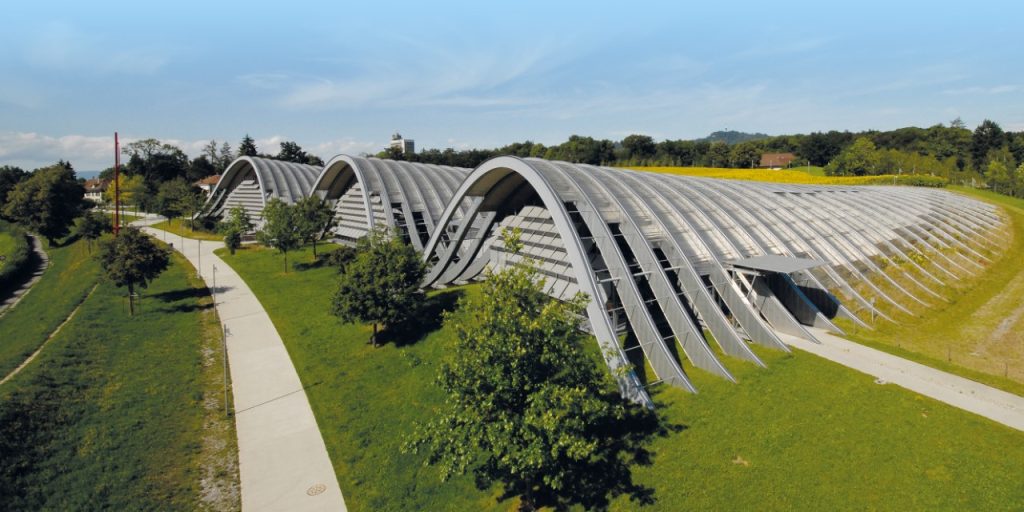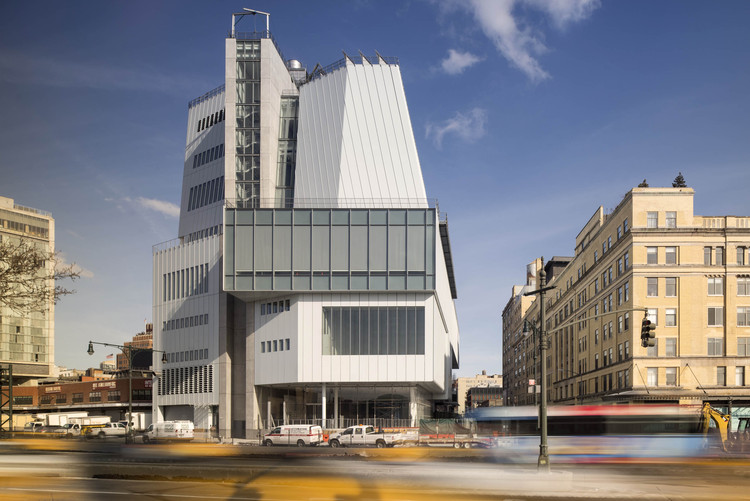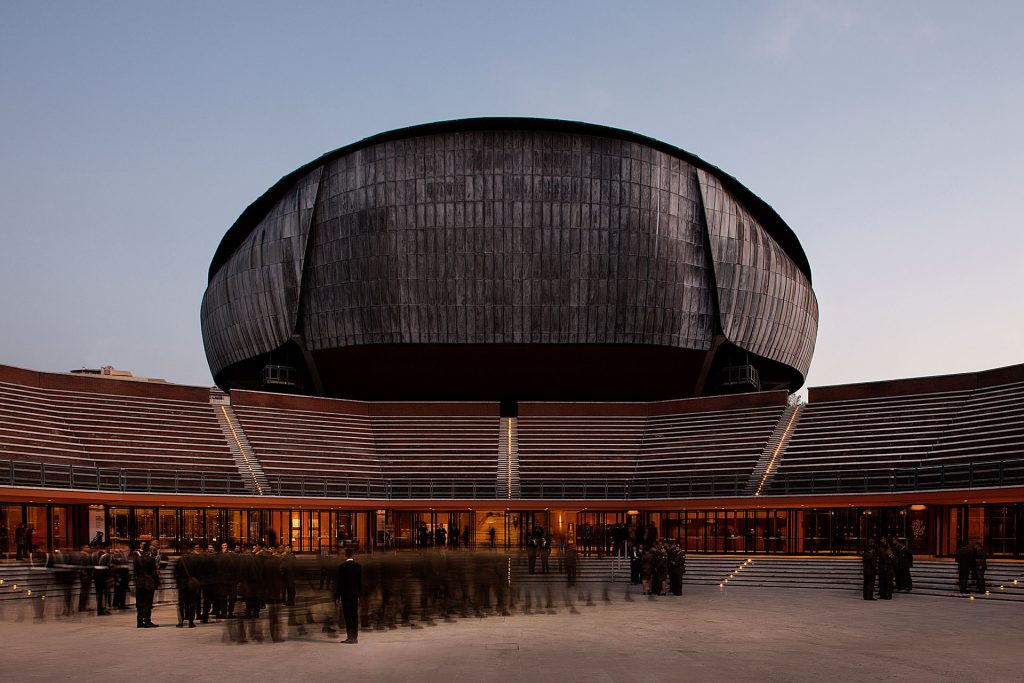Renzo Piano is an Italian-born Architect who is a laureate of the prestigious Pritzker Award (1998). Born in the Mediterranean city of Italy, Genoa, in 1937 in a builder’s family, he started designing from a young age. In 1964, he studied architecture at the Polytechnic University of Milan and the University of Florence.
From the year 1965 – 1968, he taught at the Polytechnic University. He worked for two renowned architectural firms; One for the notable architect Louis Kahn (Philadelphia) and another for the Polish engineer Zygmunt Stanislaw Makowski (London). In the year 1998, he was awarded the highest architecture award, the Pritzker Architecture Prize. He is the founder of the Renzo Piano Building Workshop (RPBW) which is an international architecture practice (Paris and Genoa).
Renzo Piano Building Workshop (RPBW) was established by the renowned architect Renzo Piano in 1981. RPBW is led by 12 partners, with several offices in Genoa, France, Paris, and Italy. Since the year it has been established RSBW has designed and completed around 120 projects.
“As an architect, you have to provide a shelter to enjoy art. And you have to love art. It’s like when you make a concert hall. You must love music. This is the reason why you make the space, to enjoy music – making a space for art is the same thing.”
-Renzo Piano
The iconic structures designed by Renzo Piano, showcase design that integrates modern technology with modern shapes and materials utilization. His architecture and designs are characterized as postmodern or high-tech. The utilization of modern technology is quite evident in a majority of his monumental iconic designs. He is widely known for his high-tech public space design and planning. Lightness is another characteristic design feature demonstrated quite evidently in his works.
Listed here are ten notable structures designed by Renzo Piano;
Pompidou Cultural Center
Location: Paris, France
Building Typology: Cultural Center
Construction: Completed in 1977
Pompidou Cultural Center is one of the famous iconic structures designed by the renowned architect Renzo Piano and Richard Rogers. The structure is the best example of inside-out architecture that is implemented in the design. The structural, mechanical, and circulation systems are exposed on the exterior surface.
Located in Paris it is the prime center of attraction in the city, receiving more than 150 million visitors since its completion. The prime circulation element is an escalator situated on the west façade, a tube that radiates to the top of the structure with a view of Paris.
The Shard
Location: London, United Kingdom
Building Typology: Office
Construction: Completed in 2012
The Shard located in London is the 72-story iconic skyscraper designed by Renzo Piano. The structure is 309.6 meters high which is the tallest structure in the United Kingdom. It is a mixed-use skyscraper consisting of offices and residential and retail spaces. The slender and pyramidal form of the tower radiates into a spide. It is composed of eight sloping glass facades.
The design of the spire structure is energy efficient, heat and power plant, and operates on natural gas. The fuel is converted into electricity for all the levels of the structure and the recovered heat provides hot water.
Pathe Foundation
Location: Paris, France
Building Typology: Exhibition Center
Construction: Completed in 2014
The organic glass structure designed by Renzo Piano houses the Jerome Seydoux-Pathe Foundation situated in an urban context. The project aimed to create a foundation primarily dedicated to the French film company Pathe’s heritage. The single organic form is situated in the courtyard of a 19th-century block. The peculiar bulbous design is a product obtained due to the site constraints and restrictions.
The organic roof of the structure is composed of glass that provides natural lighting to the office spaces. The curved volume located within the courtyard is supported and situated on supports. The arched roof is composed of timber ribs that support the curved glass panels.
Zentrum Paul Klee
Location: Berne, Switzerland
Building Typology: Museum
Construction: Completed in 2005
The museum is dedicated to showcasing Swiss-born German artist Paul Klee, designed by Renzo Piano Building Workshop Architects. It is located on the outskirts of Berne in Switzerland and houses 4000 artworks by Paul Klee. The organic roof form of the structure is inspired by the region (Hills and cultivated fields).
The museum consists of a concert hall, conference center, exhibition space, interactive museum for children, and center for study and research. The curved roof is composed of steel beams that are partially fixed and partially motorized that filter natural lighting. The curved roofing is integrated with the natural landscape of the countryside of Berne.
Whitney Museum of American Art
Location: New York, United States
Building Typology: Museum
Construction: Completed in 2015
The Whitney Museum is an art museum located in Manhattan, New York that focuses on showcasing 20th and 21st-century American art. The Whitney Museum aimed to expand the museum collection, which consists of more than 19,000 permanent modern and contemporary artworks. The entrance of the museum is dramatically cantilevered, serving as a public space. The asymmetrical structure is composed of blue-grey steel panels evident in the façade.
The asymmetrical structure consists of eight levels with a theatre, column-free gallery, education center, library, reading spaces, and conservation laboratory. The top level of the museum consists of a café and studio gallery naturally lit by a skylight.
Whittle School
Location: Shenzhen, China
Building Typology: Educational
Construction: Completed in 2019
The Whittle School designed by Renzo Piano is located in Shenzhen, China. This new school is situated in the centre of Qianhai Mawan Development, a new district in Shenzhen. The structure is designed to house 2,200 students as a place to learn, grow, and develop. The school structure is divided into 2 parts, the main building (32- metre high) consists of 10 floors, and the second part of the upper floor (18- metre high).
The ground floor of the structure is 6m high which is visually transparent, creating a building opening to the surrounding that helps children interact. The openness and transparency of the entire structure create a well light study environment and visual connection with the community.
Centro Botin
Location: Santander, Spain
Building Typology: Visual arts center
Construction: Completed in 2017
The Cultural Center is located in Spain, designed by Renzo Piano in collaboration with Luis Vidal and Arquitectos. The center for art and culture is situated half on land and half suspended over the water, projecting into the Bay of Santander. The project focused on creating a center that creates a unison of the historical part of the city and the sea.
The structure is suspended over water by the utilization of stilts that create an unobstructed view of the sea. The structure consists of a two lobed form creating a round form structure, composed of rounded ceramic tiles.
California Academy of Sciences
Location: San Francisco, United States
Building Typology: University
Construction: Completed in 2008
California Academy of Sciences is a research institute and natural history museum located in the United States, designed by Renzo Piano. It is one of the most prestigious and reputed institutions in the US. The Academy is one of the best examples of a sustainably designed structure, with LEED Platinum certification. The Institution consists of education with exhibition space, conservation, natural history museum, and aquarium spaces.
The Living roof is composed of 1,700,000 autochthonous plants planted in coconut fibre containers, and the domed roof consists of patterned skylights (open and close automation). The structure’s interiors are primarily natural sunlight (90% of spaces are sunlight).
Auditorium Parco Della Música
Location: Rome, Italy
Building Typology: Auditorium / Culture
Construction: Completed in 2002
Parco Della Musica is a public music complex located in Rome, Italy, designed by Renzo Piano. It is a multi-purpose complex consisting of three concert halls and an outdoor theatre. The semi-circular layout of 3 the individual auditoriums, create a fourth central open-air auditorium with 2,800 seating area.
The three-shell structure is composed of lead roof cladding that consists of a mixed structure with laminated wooden beams and steel ribs. The auditoriums have cushion acoustic elements situated in the ceiling of the halls.
New York Times Building
Location: New York, United States
Building Typology: New York Times office
Construction: Completed in 2007
New York Times Building is one of the iconic skyscrapers, designed by Renzo Piano who won the tender for construction. It was built to house The New York Times, one of the most important newspaper companies in New York. The skyscraper consists of 52 levels with a plate of four floors respecting the height of surrounding structures. The design of the structure aimed to create an energy efficiency that focuses on transparency and lightness of the entire structure.
The structure rises to a height of 228 meters with the external curtain rising to 256-meter height and the mast rising to an overall height of 318.8 meters. 28 floors are utilized by the New York Times and the rest of the floors are occupied by restaurants and offices.






























Leave a comment